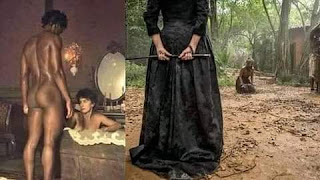The Untold Side of China During World War II Is More Horrifying Than You Can Even Imagine
The Untold Side of China During World War II Is More Horrifying Than You Can Even Imagine
Nothing is known of the baby in the untitled photograph, often called "Bloody Saturday," which depicts a child crying in the ruins of a Shanghai train station in 1937. Because it remains unidentified, the baby serves as a symbol, representing, in utter hysteria, the atrocities committed against China by Japan during the Battle of Shanghai and throughout the protracted conflict between Japan and China during the conflict.
At the time, the Japanese transgressions committed against China were horrific – yet mostly underreported in the plethora of WWII horror stories circulated in the West. The "Bloody Saturday" photograph brought to light what China endured at the hands of the Japanese during this tumultuous time.
The Photograph Led To Western Outrage And Is Described As Successful Propaganda
The "Bloody Saturday" photograph remains one of the most haunting images perpetrated against the Chinese during the conflict. The image of the small child crying in a pile of rubble tugs at the viewer's heart strings, and it stimulated Western outrage over the Japanese treatment of the Chinese during WWII. Even more intriguing: the photographer, H.S. Wong, never found out any information about his subject. However, the baby's mother lay lifeless nearby.
Within a short time, eyes around the globe had seen "Bloody Saturday," and it stoked anti-Japanese sentiment. Because of this, journalist Harold Isaacs once described the photo as "one of the most successful propaganda pieces of all time."
The conflict between Japan and China, the Second Sino-Japanese War, began July 7, 1937 and ended September 9, 1945, with the end of WWII and Japan's surrender to the United Nations. For decades, Japanese imperial control had been encroaching on China. During this time, the two countries fought in a myriad of small skirmishes.
The first major conflict, known as the Marco Polo Bridge Incident, began when the Chinese army initiated aggression on the Japanese army across the Marco Polo Bridge while trying to negotiate peace terms. The bridge incident is widely considered the direct beginning of the Second Sino-Japanese War.
Right Before The Photo Was Taken, Shanghai Had Been Aerially Bombarded
On August 14, 1937, more than 1,500 people lost their lives in Shanghai as a result of a Japanese aerial assault on the city. The people in these photos were survivors in what was, at the time, the worstt aerial aggression on a city to date.
The horrific incident perpetuated burgeoning anger and aggression towards Japan.
The Number Of Chinese Slain During The Nanking Incident Is Unknown – But Estimated At Tens Of Thousands
During the Nanking Massacre, which took place over the course of six weeks and began in December 1937, Japanese soldiers brutally took out an estimated 40,000-60,000 civilians after seizing Nanking. The Japanese soldiers were so ruthless, some even had a contest to see who could slay 100 people first.
An American missionary, John Magee, produced a film outlining the atrocities at Nanking, which can be viewed above.
Aggressive Policy Contributed To The Japanese Atrocities
The "Three Alls Policy" was adopted by the Japanese during the Second Sino-Japanese War in order to stymie the strength and growth of the communist party across northern China (where it was flourishing); the three 'alls' were "kill all, burn all, loot all."
It is also known as the "Burn to Ash Policy," and it was a scorched-earth approach to the conflict.
The Japanese Subjected the Chinese To Human Experimentation
The Japanese carried out some of the most devastating acts during the Second Sino-Japanese War, but perhaps the most notorious of their crimes was the human experimentation that occurred at the infamous Unit 731. At least 3,000 people, 70% of whom were Chinese, were subjected to experimentation of all types.
This included forced pregnancy; invasive surgeries while the subjects were still alive and without anesthesia; injection of plague, syphilis and other diseases; and more.
Biological Warfare Was Fair Game, Too
In addition to human experimentation, the Japanese also conducted biological warfare experiments at Unit 731. They injected prisoners with Bubonic plague, cholera, and smallpox. A 1995 article in the New York Times includes an interview with a medical assistant who present at the time of the tests.
He detailed atrocities carried out that included using tests on humans they injected with plague as a foundation for making plague bombs for use in WWII.
Operation Sook Ching Involved The Purging Of Anti-Japanese Elements In Singapore
Over the course of a month, from February to March 1942, Japanese troops sought to eliminate any anti-Japanese elements from the Chinese civilians in Singapore. 'Sook Ching' translates to "purge through cleansing," and it involved sending all men between the ages of 18 and 50 through screenings, during which their anti-Japanese sentiments were tested.
Those who did not pass were immediately slain. The operation was only meant to last two days, but it stretched from February 21 to March 4.
Military Sex Work Was Disguised As Something More 'Comforting'
The Imperial Japanese Army forced countless women and girls into sexual servitude over the course of the conflict. The term "comfort women'" is a direct translation of the Japanese euphemism for sex workers. These women had no choice in terms of their partipation in what they were being forced to do.
Even after their ordeal was over, many of these women could not return home due to the intense shame they felt.












Comments
Post a Comment